Shanying Zhu
Enlighten-Your-Voice: When Multimodal Meets Zero-shot Low-light Image Enhancement
Dec 15, 2023Abstract:Low-light image enhancement is a crucial visual task, and many unsupervised methods tend to overlook the degradation of visible information in low-light scenes, which adversely affects the fusion of complementary information and hinders the generation of satisfactory results. To address this, our study introduces ``Enlighten-Your-Voice'', a multimodal enhancement framework that innovatively enriches user interaction through voice and textual commands. This approach does not merely signify a technical leap but also represents a paradigm shift in user engagement. Our model is equipped with a Dual Collaborative Attention Module (DCAM) that meticulously caters to distinct content and color discrepancies, thereby facilitating nuanced enhancements. Complementarily, we introduce a Semantic Feature Fusion (SFM) plug-and-play module that synergizes semantic context with low-light enhancement operations, sharpening the algorithm's efficacy. Crucially, ``Enlighten-Your-Voice'' showcases remarkable generalization in unsupervised zero-shot scenarios. The source code can be accessed from https://github.com/zhangbaijin/Enlighten-Your-Voice
Enlighten Anything: When Segment Anything Model Meets Low-Light Image Enhancement
Jun 22, 2023Abstract:Image restoration is a low-level visual task, and most CNN methods are designed as black boxes, lacking transparency and intrinsic aesthetics. Many unsupervised approaches ignore the degradation of visible information in low-light scenes, which will seriously affect the aggregation of complementary information and also make the fusion algorithm unable to produce satisfactory fusion results under extreme conditions. In this paper, we propose Enlighten-anything, which is able to enhance and fuse the semantic intent of SAM segmentation with low-light images to obtain fused images with good visual perception. The generalization ability of unsupervised learning is greatly improved, and experiments on LOL dataset are conducted to show that our method improves 3db in PSNR over baseline and 8 in SSIM. Zero-shot learning of SAM introduces a powerful aid for unsupervised low-light enhancement. The source code of Enlighten Anything can be obtained from https://github.com/zhangbaijin/enlighten-anything
SAM-helps-Shadow:When Segment Anything Model meet shadow removal
Jun 01, 2023



Abstract:The challenges surrounding the application of image shadow removal to real-world images and not just constrained datasets like ISTD/SRD have highlighted an urgent need for zero-shot learning in this field. In this study, we innovatively adapted the SAM (Segment anything model) for shadow removal by introducing SAM-helps-Shadow, effectively integrating shadow detection and removal into a single stage. Our approach utilized the model's detection results as a potent prior for facilitating shadow detection, followed by shadow removal using a second-order deep unfolding network. The source code of SAM-helps-Shadow can be obtained from https://github.com/zhangbaijin/SAM-helps-Shadow.
Differentially Private Distributed Mismatch Tracking Algorithm for Constraint-Coupled Resource Allocation Problems
Apr 15, 2022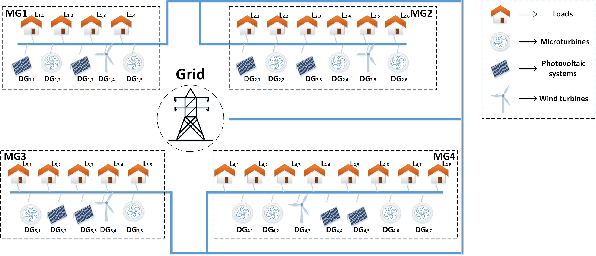
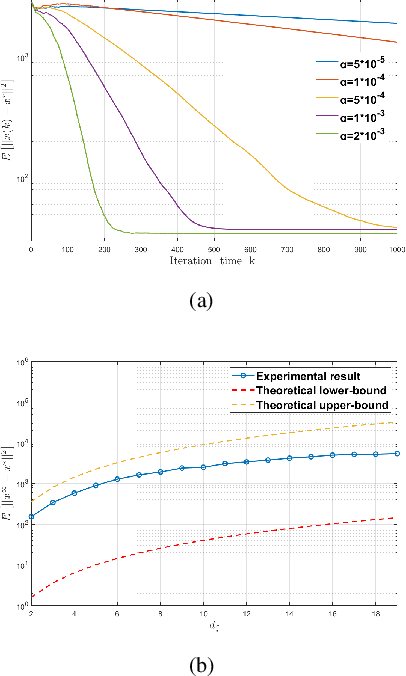
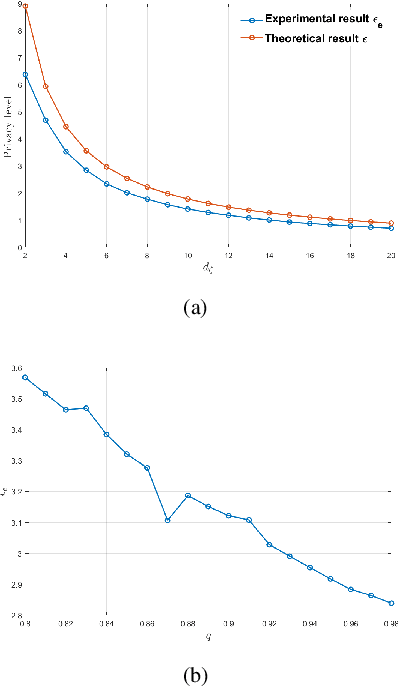
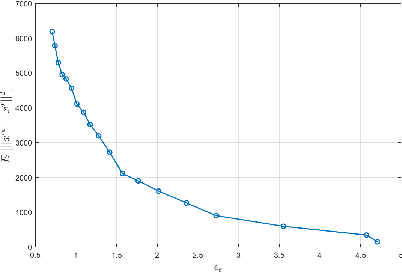
Abstract:This paper considers privacy-concerned distributed constraint-coupled resource allocation problems over an undirected network, where each agent holds a private cost function and obtains the solution via only local communication. With privacy concerns, we mask the exchanged information with independent Laplace noise against a potential attacker with potential access to all network communications. We propose a differentially private distributed mismatch tracking algorithm (diff-DMAC) to achieve cost-optimal distribution of resources while preserving privacy. Adopting constant stepsizes, the linear convergence property of diff-DMAC in mean square is established under the standard assumptions of Lipschitz gradients and strong convexity. Moreover, it is theoretically proven that the proposed algorithm is {\epsilon}-differentially private.And we also show the trade-off between convergence accuracy and privacy level. Finally, a numerical example is provided for verification.
Bidirectional Pricing and Demand Response for Nanogrids with HVAC Systems
Mar 01, 2022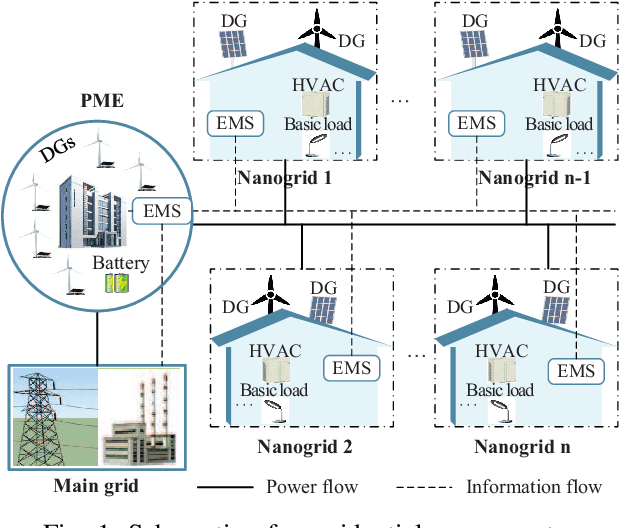

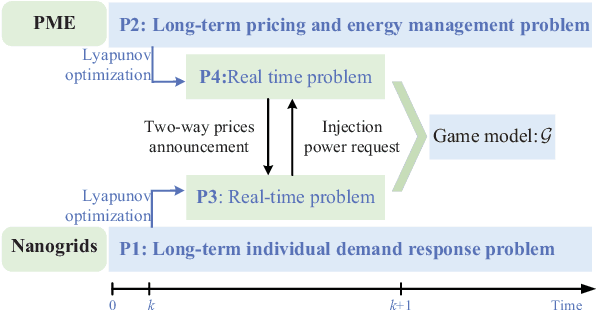
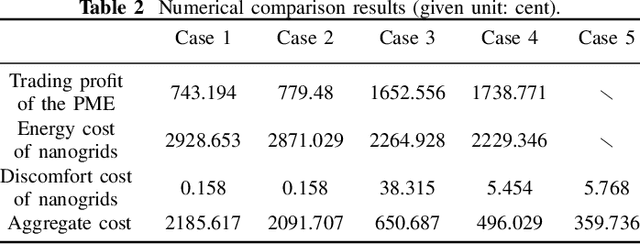
Abstract:Owing to the fluctuant renewable generation and power demand, the energy surplus or deficit in each nanogrid is embodied differently across time. To stimulate local renewable energy consumption and minimize the long-term energy cost, some issues still remain to be explored: when and how the energy demand and bidirectional trading prices are scheduled considering personal comfort preferences and environmental factors. For this purpose, the demand response and two-way pricing problems concurrently for nanogrids and a public monitoring entity (PME) are studied with exploiting the large potential thermal elastic ability of heating, ventilation and air-conditioning (HVAC) units. Different from nanogrids, in terms of minimizing time-average costs, PME aims to set reasonable prices and optimize profits by trading with nanogrids and the main grid bi-directionally. In particular, such bilevel energy management problem is formulated as a stochastic form in a long-term horizon. Since there are uncertain system parameters, time-coupled queue constraints and the interplay of bilevel decision-making, it is challenging to solve the formulated problems. To this end, we derive a form of relaxation based on Lyapunov optimization technique to make the energy management problem tractable without forecasting the related system parameters. The transaction between nanogrids and PME is captured by a one-leader and multi-follower Stackelberg game framework. Then, theoretical analysis of the existence and uniqueness of Stackelberg equilibrium (SE) is developed based on the proposed game property. Following that, we devise an optimization algorithm to reach the SE with less information exchange. Numerical experiments validate the effectiveness of the proposed approach.
Distributed Dual Gradient Tracking for Economic Dispatch in Power Systems with Noisy Information
Nov 17, 2021



Abstract:Distributed algorithms can be efficiently used for solving economic dispatch problem (EDP) in power systems. To implement a distributed algorithm, a communication network is required, making the algorithm vulnerable to noise which may cause detrimental decisions or even instability. In this paper, we propose an agent-based method which enables a fully distributed solution of the EDP in power systems with noisy information exchange. Through the novel design of the gradient tracking update and introducing suppression parameters, the proposed algorithm can effectively alleviate the impact of noise and it is shown to be more robust than the existing distributed algorithms. The convergence of the algorithm is also established under standard assumptions. Moreover, a strategy are presented to accelerate our proposed algorithm. Finally, the algorithm is tested on several IEEE bus systems to demonstrate its effectiveness and scalability.
 Add to Chrome
Add to Chrome Add to Firefox
Add to Firefox Add to Edge
Add to Edge